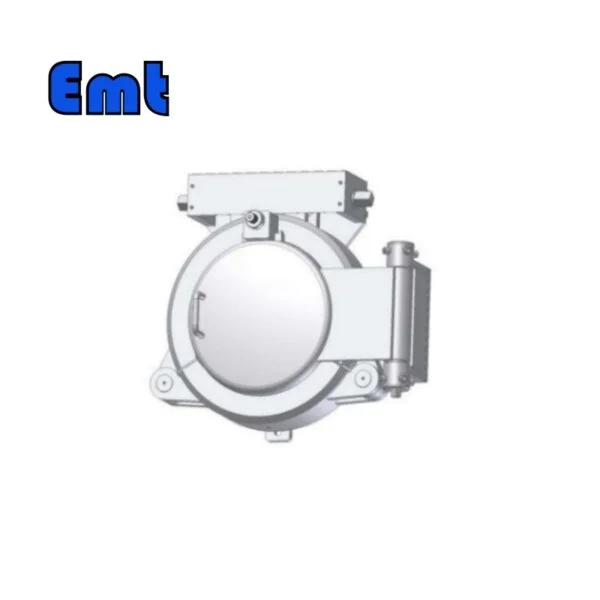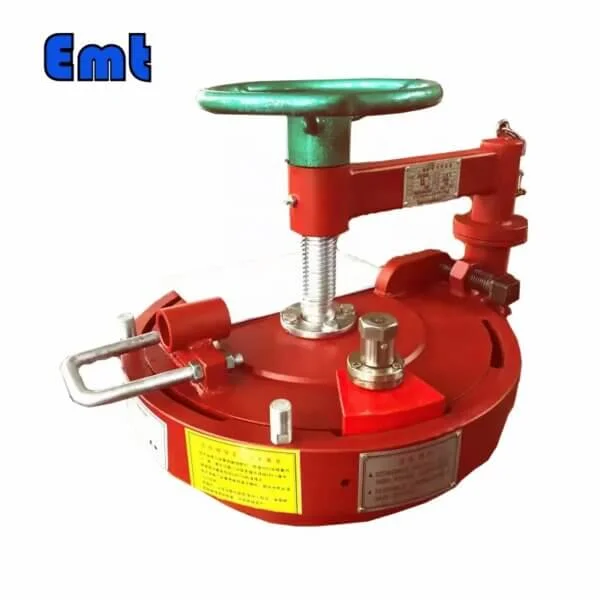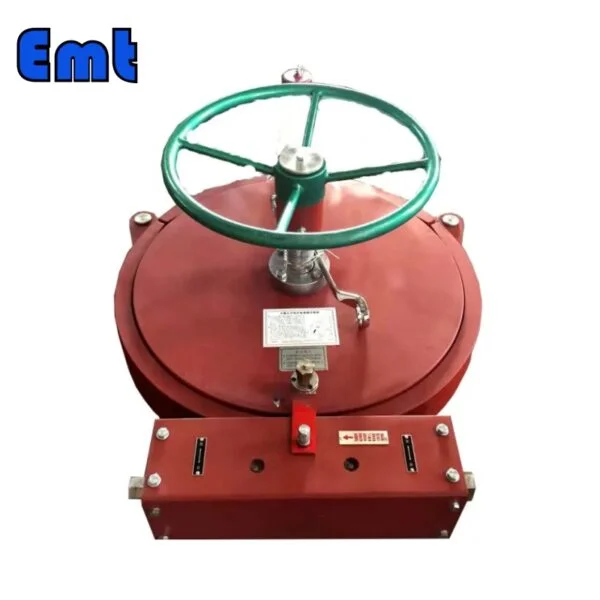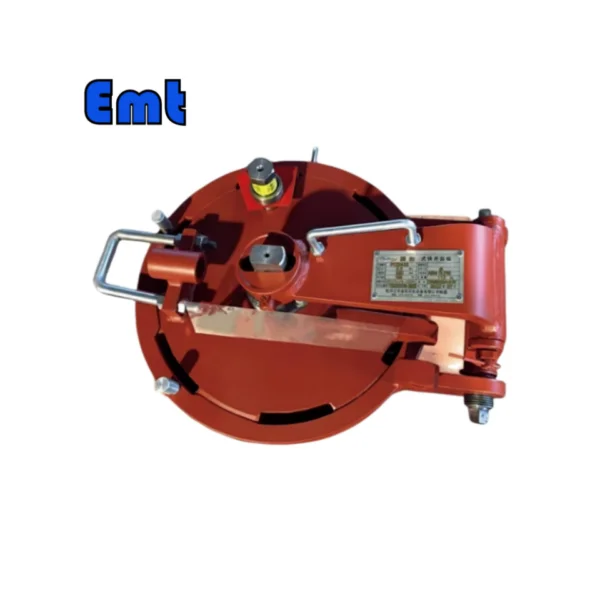Description
Introduction
Quick Opening Closures (QOCs) are pressure-containing components that provide quick and easy access to the inside of a pipe system. These devices are a vital feature of many industrial pipelines and pressure vessels and are designed to allow for faster opening and closing operations, saving time and increasing operational productivity.
These closures are made with safety and convenience in mind. They can be opened and closed in seconds without the use of any special tools, which is a huge improvement over standard bolted flange connections, which can take significantly longer to open and close. Because of their fast actuation, they are especially useful in systems that require frequent inside access, such as pig launchers and receivers.
QOCs are frequently installed on pig launchers and receivers, pressure containers such as filter units, and vertical vent stack blowdowns. They are built into specific pipeline design codes, such as ASME B31.4 for liquid pipelines and ASME B31.8 for gas pipelines. They are typically designed in compliance with ASME Section VIII, Division 1, when mounted on pressure vessels.
The design and structure of QOCs differ based on their use and pipeline nominal diameter. The bayonet type is used for pipelines DN100 to DN350, and the lock-ring type is common for pipelines DN400 to DN1200.
Selecting the Correct Type of QOC
The proper Quick Opening Closure (QOC) for a given application is critical for the efficient and safe operation of pipelines and pressure vessels. The right QOC can lead to increased productivity, reduced maintenance costs, and improved safety measures.
The Importance of Choosing the Correct QOC
The suitable QOC type gives advantages such as quicker access to the inside of a pipeline system, fewer operational disturbances, and a reduction in maintenance job time. Furthermore, the proper QOC can aid in the prevention of potential safety issues such as pressure build-up or unintentional opening, resulting in a safer working environment.
Selection Criteria Based on Pipeline Nominal Diameter (DN)
The nominal diameter (DN) of the pipeline or pressure vessel for which the QOC is intended is frequently a deciding factor. The nominal diameter is a standard numeric specification of pipe size that is important in determining which type of closure can be utilized efficiently.
- Quick-Opening Bayonet Closure for DN100 to DN350 Pipelines The bayonet-type quick-opening closure is frequently the best solution for pipelines with nominal diameters ranging from DN100 to DN350. This sort of closure is built with a simple and efficient opening mechanism that allows for rapid and easy access to the pipeline’s interior. The bayonet-style closure has a male portion that fits into a female counterpart, creating a secure and simple-to-use connection.
- Lock-Ring Quick-Opening Closure for DN400 to DN1200 Pipelines Larger pipes with nominal diameters ranging from DN400 to DN1200 are commonly closed using a lock-ring quick-opening closure. This type of closure has a locking ring mechanism that securely holds the door in place while maintaining a strong and long-lasting seal even under tremendous pressure. It is an efficient solution for bigger pipeline systems since the lock-ring closure can be opened quickly by releasing the locking ring.
Choosing the appropriate QOC based on the nominal diameter and unique requirements of the pipeline system can increase operational efficiency and safety dramatically. As a result, in order to make an informed decision, it is critical to understand the characteristics and benefits of various forms of QOCs.
Quick Opening Closures’ Key Technical Indicators
Quick Opening Closures (QOCs) are designed to suit a wide range of industry specifications. They are developed with numerous important technical characteristics in mind to assure appropriateness and performance. These essential technical indicators drive the design and selection of QOCs, ensuring that they meet the requirements of various industrial applications while also maintaining safety and efficiency under varied operating conditions.
- Nominal Diameter (DN): QOCs are intended to accommodate a wide range of pipeline sizes. They can support nominal diameters up to 1800mm, making them compatible with a variety of pipeline layouts.
- Design Pressure (PN): QOCs are designed to withstand high pressure and can tolerate pressures of up to 40MPa. This guarantees that they provide dependable performance in applications involving high pressures.
- Working Medium: QOCs are intended to be compatible with a wide range of working materials. QOCs can adapt to the medium, allowing versatility across multiple applications, whether the pipeline transports oil, gas, or water.
- Design Temperature: QOCs are designed to perform well throughout a wide temperature range. They can perform flawlessly in temperatures ranging from -50°C to +300°C, making them ideal for usage in extreme cold or heat.
- Material: QOCs are made of high-quality materials such as 16Mn, A350LF2, A105, SS304, SS316, F51, F55, INCONEL625, and HASTELLOY C. These materials are chosen for their durability, corrosion resistance, and longevity, which ensures that the QOCs can tolerate harsh environments and maintain their effectiveness over time.
- Pipe Thickness: QOCs are made to fit a wide range of pipe thicknesses. They can be mounted to pipes ranging in thickness from 6mm to 100mm, making them appropriate for a wide range of pipeline layouts.
Different Types of Quick Opening Closures Structure
Quick Opening Closures (QOCs) occur in a variety of shapes and sizes in the world of pipelines and pressure vessels, each with its own construction and operating mechanism. Understanding these various structures is critical for picking the best QOC for a given application.
Bayonet Type Quick Open Closures (Horizontal and Vertical)
The Bayonet Type Quick Opening Closure is made up of a male (the bayonet) and a female counterpart. This design allows for the closure to be opened and closed quickly without the use of any special tools.
- Horizontal Bayonet Type: The bayonet and corresponding female portion are oriented horizontally in the horizontal design. This enables easy access to and examination of the interior of the pipeline or pressure vessel.
- Vertical Bayonet Type: The vertical bayonet design is similar to the horizontal style, except the bayonet and female components are placed vertically. This design is generally utilized in situations that need vertical installation due to space constraints or other factors.
Clamp Type Quick Open Closures (Horizontal and Vertical)
The Clamp Type Quick Opening Closure has a hinged clamp mechanism that allows it to be opened and closed quickly. This design creates a secure seal and is simple to use.
- Horizontal Clamp Type: The clamp is oriented horizontally in the horizontal design, giving simple access to the inside of the pipeline or pressure vessel.
- Vertical Clamp Type: The clamp is oriented vertically in the vertical design, making it suited for applications requiring vertical installation.
Lock Ring Quick Open Closures (Horizontal and Vertical)
The Lock Ring Quick Opening Closure has a locking ring mechanism that keeps the door securely in place. It is an efficient alternative for big pipeline systems since the locking ring may be easily disengaged to open the closure.
- Horizontal Lock Ring Type: With the locking ring mechanism oriented horizontally, the horizontal design enables simple access to the inside of the pipeline or pressure vessel.
- Vertical Lock Ring Type: A vertically oriented locking ring mechanism is used in the vertical design. This design is utilized in applications that need vertical installation.
Conclusion
Quick Opening Closures (QOCs) are critical for the safe and efficient operation of pressure vessels and pipelines in a wide range of industries. They are an essential tool for maintenance, inspection, and operational tasks since they give quick access to the inside of a pipeline system.
When choosing the best QOC, the nominal diameter, design pressure, working medium, design temperature, material, and pipe thickness must all be taken into account. It is also critical to understand how various QOC types work, both physically and operationally.
Each of the three types of quick-opening closures—Bayonet, Clamp, and Lock Ring—has unique advantages and characteristics designed to fulfill certain operational requirements and pipeline layouts.
QOCs have a significant impact on increasing operational performance, improving safety, and requiring less maintenance in many industrial environments. As a result, gaining these benefits is contingent on selecting the suitable QOC.









Reviews
There are no reviews yet.